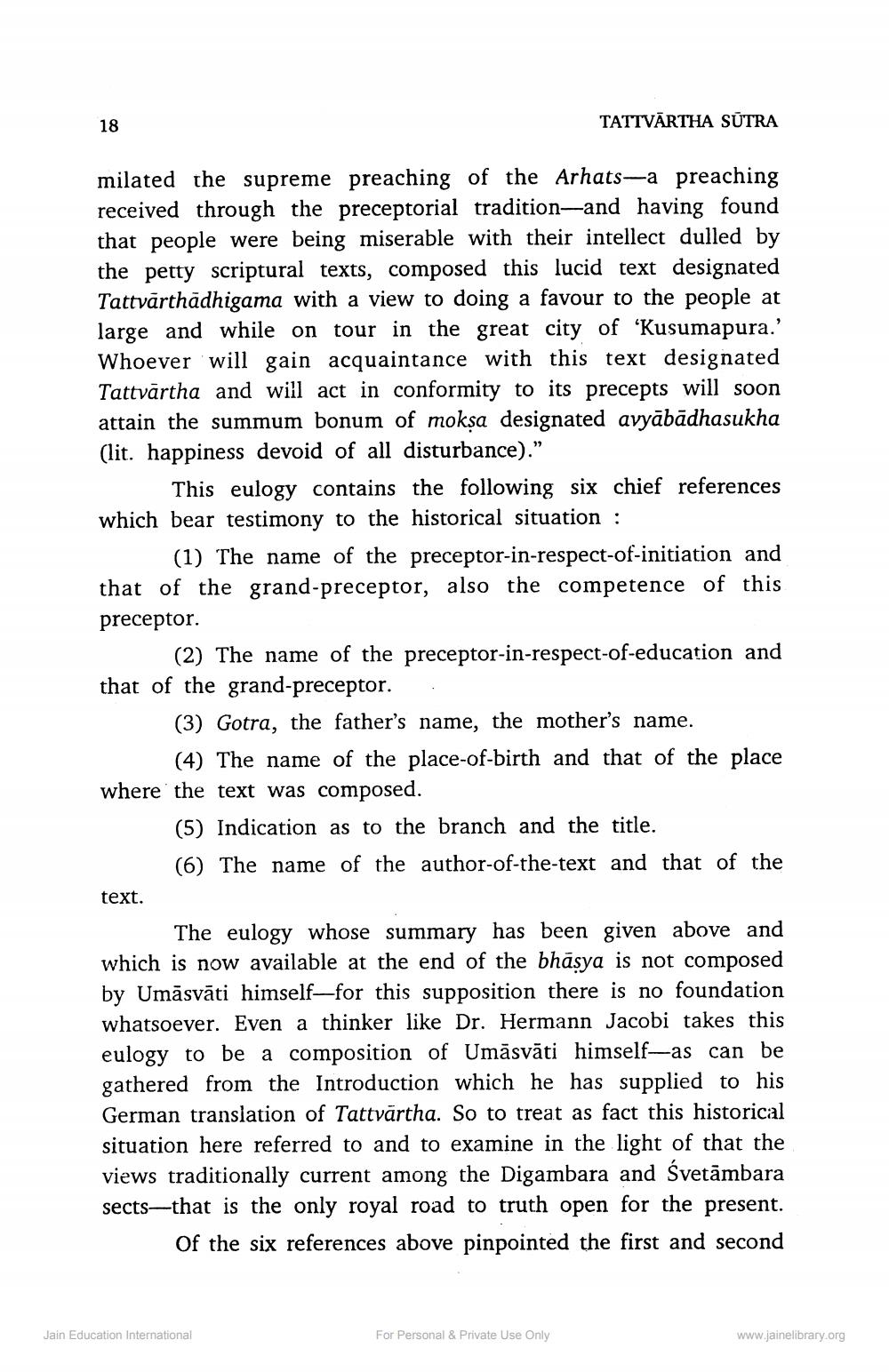________________
18
TATTVĀRTHA SŪTRA
milated the supreme preaching of the Arhats-a preaching received through the preceptorial tradition and having found that people were being miserable with their intellect dulled by the petty scriptural texts, composed this lucid text designated Tattvārthādhigama with a view to doing a favour to the people at large and while on tour in the great city of ‘Kusumapura.' Whoever will gain acquaintance with this text designated Tattvārtha and will act in conformity to its precepts will soon attain the summum bonum of mokșa designated avyābādhasukha (lit. happiness devoid of all disturbance).”
This eulogy contains the following six chief references which bear testimony to the historical situation :
(1) The name of the preceptor-in-respect-of-initiation and that of the grand-preceptor, also the competence of this preceptor.
(2) The name of the preceptor-in-respect-of-education and that of the grand-preceptor.
(3) Gotra, the father's name, the mother's name.
(4) The name of the place of birth and that of the place where the text was composed.
(5) Indication as to the branch and the title.
(6) The name of the author-of-the-text and that of the text.
The eulogy whose summary has been given above and which is now available at the end of the bhāsya is not composed by Umāsvāti himself-for this supposition there is no foundation whatsoever. Even a thinker like Dr. Hermann Jacobi takes this eulogy to be a composition of Umāsvāti himself—as can be gathered from the Introduction which he has supplied to his German translation of Tattvārtha. So to treat as fact this historical situation here referred to and to examine in the light of that the views traditionally current among the Digambara and Śvetāmbara sects—that is the only royal road to truth open for the present.
Of the six references above pinpointed the first and second
Jain Education International
For Personal & Private Use Only
www.jainelibrary.org




